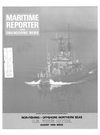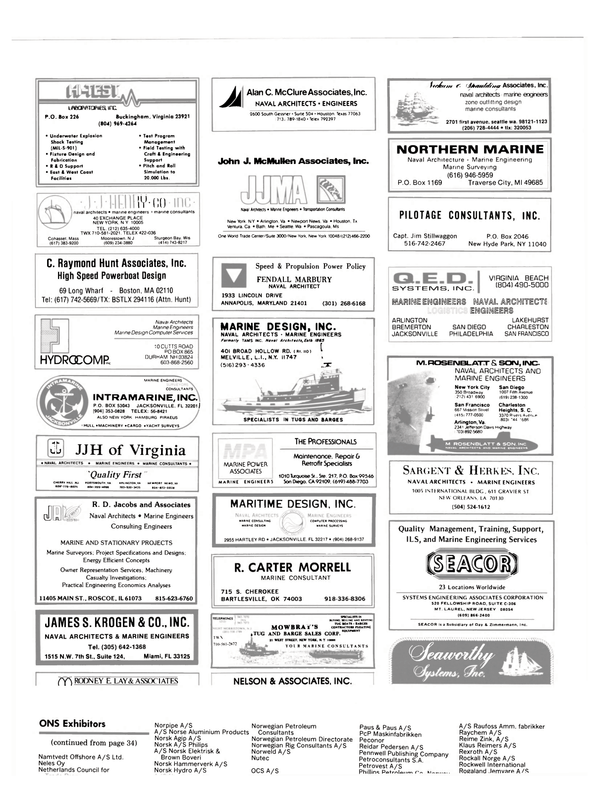
Hydrostatic Drives Propel Many New 'Old-Time' Paddlewheelers
High-torque, low-speed hydraulic motors are being used on many paddlewheel vessels all over the world. This form of propulsion transmission and its benefits would appear to be attractive in other applications also.
Hydrostatic drives are by no means new for propulsion transmission on paddleboats. One of the first installations goes back to 1972 on a passenger vessel on the Bavarian Lake in Germany. That craft's original steam engine was replaced by two 230-hp Hagglund hydraulic drives. Similar projects have been realized in Italy, Australia, the Netherlands, and especially in the U.S.
A count of the existing hydrostatic- powered paddleboat fleet in the U.S. shows about 20 installations.
They all rely on Hagglund hightorque, low-speed hydraulic motors, which are particularly favorable in this area. The majority of these vessels are newbuildings designed for the growing industry of "nostalgic cruises." The promoters of these ventures have revitalized the old traditions and awakened memories for many senior citizens.
Potomac River Boat Company's Cherry Blossom went into service in 1984 as the first paddleboat on that Washington, D.C. river in almost 40 years. She was built by Offshore Shipbuilders in Palatka, Fla., a company that also delivered the 125-foot sidewheeler Andrew Fletcher. Operated as an excursion vessel by Seaport Line in New York Harbor, she is said to be the first large sidewheeler built in the U.S. in the past 60 years. Offshore Shipbuilders have plans to construct three more hydrostatic-powered paddleboats.
Marine Power, Inc. in Florida, a firm owned by naval architect William G. Preston, is well known in the paddleboat field, and has designed more than 10 hydraulic-driven sternwheelers to date. The firm is optimistic about further similar projects. Their largest existing paddlewheeler is the 100-foot Landing Queen, operating on Lake Conroe, Texas. She was built in sections by Walker Marine at Moss Point, Miss., and assembled on the shores of Lake Conroe. Marine Power is currently working on a 132-foot sternwheeler, the Discovery III, for Alaska River Ways, Inc.
LaCrosse Riverboat in LaCrosse, Wise., another specialist in paddleboats, has so far built 10 sternwheelers.
The largest is the 125-foot Tahoe.
Four more sternwheelers are currently in the design stage; all will be hydraulically powered.
Like many sternwheelers, the Betsy Ann has a split paddle to assist steering. Steering is further improved with two go-ahead and two back-up rudders. Each of the vessel's 240-bhp diesel engines, operating at 1,100 rpm, drives a variable-volume, pressure-compensated hydraulic pump. Each pump powers a torque-arm-mounted Hagglund hydraulic motor.
High-torque, low-speed hydraulic motors or radial piston design are of course applicable in many other types of machinery where similar conditions are encountered. The hydrostatic transmissions offer the following benefits: Efficient torquelimiting by relief valves; smooth, easy speed control from zero to maximum; easy reversing; high torque/inertia ratio, low time constant; easy adoption to feedback control systems; freedom to place the prime mover in any suitable space; and simple installation.
Compared with high-speed type hydraulic motors, the Hagglund motor offers higher starting torque efficiency and elimination of reduction gears. Because of the low-speed capability, this also means faster acceleration, quicker reversing, and lower noise level.
Hagglunds' hydraulic motor design is particularly well suited for the power ranges concerned—up to 750 hp at 20 rpm per motor. It hydromechanical efficiency is extremely high and it has a reliable low-speed performance, even at 0.5 rpm or less.
With a high external load capacity, the Hagglund hydraulic motor can be mounted in a bracket or with a torque arm arrangement. The motor is also easily adapted to the drive shaft, with no welding or keyways necessary.
Hagglunds foresees a continuing demand for high-torque, low-speed hydrostatic drives for propulsion applications, not only in such "exotic" cases a paddleboats but also for thrusters, silent propulsion systems, subsea vehicles, and many other demanding applications.
For further information and free brochures on the Hagglund hydrostatic drives, Circle 59 on Reader Service Card
Read Hydrostatic Drives Propel Many New 'Old-Time' Paddlewheelers in Pdf, Flash or Html5 edition of August 1986 Maritime Reporter
Other stories from August 1986 issue
Content
- MacGregor-Navire Announces Key Appointments page: 4
- New Repair Yard Under Construction In Southern Chile For ASMAR & Partner page: 6
- Yamazaki New President Of Sumitomo Machinery page: 6
- Auxiliary Rescue Salvage Vessel Commissioned At Peterson Shipyard page: 7
- NOR-FISHING '86 Trondheim, Norway, August 11-16 page: 8
- McDermott Shipyard Lays Dredge Keel page: 10
- Valmet Testing Newly Developed Ducted Propeller For Icegoing Vessels page: 10
- Wiismuller Salvage And Offshore Tugs Inc. Form New Company page: 11
- Bethlehem's Sabine Yard Busy With Drill Rig And Ship Dockings page: 12
- Fleet Oiler Construction At Penn Ship Adds To Beginning Of A New Era page: 12
- Cummins Diesels Selected To Repower Research Vessel Calypso page: 14
- Nichols Brothers Yard Delivers Luxury Catamaran Cruise Vessel page: 14
- AMERICA'S SEAPORTS The Dynamics Of Change page: 16
- AAPA's 1986 Annual Convention Set For Miami page: 22
- New Intertanko Publication— 'TANKER PORT PARTICULARS 1986' page: 25
- Ameroid DC Disc Cleaner Approved For Cleaning Westfalia Disc Stacks page: 25
- Bollinger Named Chairman Of Louisiana Shipbuilding And Repair Association page: 27
- Navy Selects Ingalls For Planning Reactivation Of Battleship Wisconsin page: 27
- Newport News Shipbuilding And SNAME Sponsor Ship Production Symposium page: 28
- M.A.N.-B&W Offers Cost-Saving Systems For Their MC Engines —New Brochures Available page: 29
- Honeywell Marine Systems Division Restructures Marketing Organization page: 30
- Free Eight-Page Brochure On Marine Powermeters Offered By Acurex page: 31
- ONS '86 SHOW AND CONFERENCE ATTRACTING STRONG INTEREST FROM EXHIBITORS page: 32
- Daewoo-Built Vehicle Carriers To Have MacGregor-Navire Access Equipment page: 35
- Fairbanks Morse Engine Division Ships First Colt-Pielstick PC4.2 page: 36
- Stable Offshore Platforms Planned By Navy For Aircraft Training Exercises page: 36
- Gear Rating Discussed At Joint Meeting Of ASNE And SNAME Sections page: 36
- New Fuel Consumption Monitoring System From Kockumation page: 36
- Tacoma Boat Launches Ocean Surveillance Ship For Navy's MSC page: 37
- Baldt Marks 85th Year As Major Supplier To Marine/Offshore Industries page: 37
- Workboats Northwest Yard Delivers High-Speed Fireboat To Ketchikan page: 38
- SI Introduces 'First Family' Of Survival/Exposure Suits page: 38
- Tidewater Marine Upgrades Another Towing/Supply Vessel At McDermott page: 39
- Magnus Maritec Named Exclusive Marine Supplier Of Ethysorb products page: 40
- Marinette Marine Launches First In Yard Patrol Boat Series page: 40
- Captain Wages Joins MSI As Director Of New Simulator Training Center page: 40
- Newfoundland-Sweden New Joint Venture Company page: 40
- Ward Leonard Electric Offers Free 10-Page Push Button Catalog page: 41
- Hydrostatic Drives Propel Many New 'Old-Time' Paddlewheelers page: 42
- Hyster Expands XL Line Of Lift Trucks page: 45
- Conrad Shipyard Delivers Unique Drydock To Republic Of Venezuela page: 45
- Shipmate's RS-6100 Navtex Receiver page: 49
- Offshore Production And Test Ship Delivered By NKK To Norwegian Owner page: 49
- Microprocessor-Based System Monitors/Controls Mooring Lines page: 50
- Moss Point Marine Completes Tug For Panama Canal Commission page: 50
- New 12-page Catalog On Multi-Port Ball Valves Offered By Pittsburgh Brass page: 50
- Bay Shipbuilding Progressing With Construction Of Sea-Land Containerships page: 55
- Moss Point Marine To Build Multipurpose Boat For U.S. Agency page: 55


